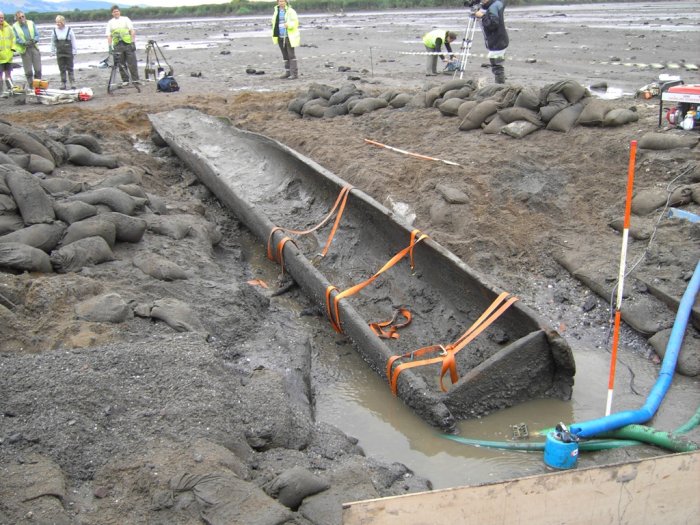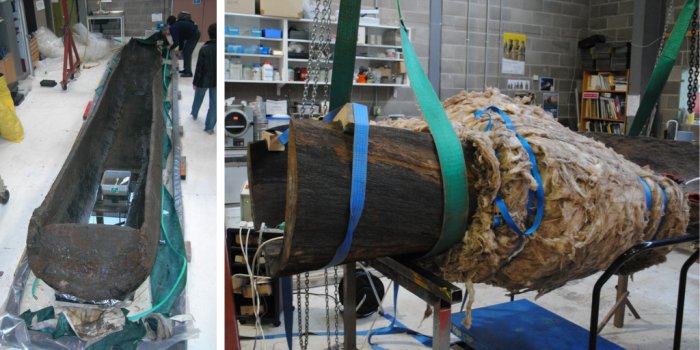Unique 3,000-Year-Old Logboat Found In River Tay – On Display In Perth Again
The story of the unique Late Bronze Age logboat started many years ago. It has taken scientists and other experts many years to recover, restore, and put the fascinating 9m (or 30 ft) long logboat on display. The logboat was previously on display in Perth for ten years but had to be moved as part of a year of work to repair and stabilize it.

The boat was officially discovered in 2001 by metal detectorists exploring the mudflats at Carpow during a summer of exceptionally low river levels. In 2006, the logboat was recovered from River Tay near Perth, Scotland.
Carved from a single 400-year-old oak tree trunk, the boat survived due to the peaty soil composition of the Perth and Tay Estuary area. An initial sample taken for radiocarbon dating returned a date of circa 1000 BC, some 3,000 years ago. The logboat is considered to be one of the oldest and best-preserved of its kind in Scotland.
The Carpow Logboat spent six years undergoing stabilization and drying at the National Museums Scotland collection center in Edinburgh.
“To conserve the boat for the long-term, the collective decision was taken to partially impregnate it with PEG (polyethylene glycol) to replace water and give the structure integrity, and then freeze dry it, to shorten that process a little. But at that time, the only freeze drier large enough to take it as a single piece was in Tokyo, Japan – sadly, not a practical proposition.
Instead, the boat was cut into three pieces, each put into its own tank and submersed in a solution of PEG for impregnation, a three-year process.

This was followed by several months of freeze-drying for each section, in the National Museum of Scotland freeze-dryer. This process removed a whopping 588 kg of water.
Differential distorting of the boat sections (where different bits of the boat warp at different rates) occurred when the boat was cut, releasing lots of pent-up tension in the wood and leading to twisting and cracking as it dried.
The conservation team innovatively devised a method of correcting this that used flexible heating mats and an adjustable aluminium former (a piece of adjustable aluminium that applies pressure to the boat as it is heated so as to bend it back into shape). This allowed the team to mould the boat back close to its original shape,” Dig It Scotland reports.

“Although it’s large and heavy, it’s also very fragile, making the conservation work rather complex.
The wood naturally wants to relax and flatten out, so we’ve had to gently warm it up, making it more pliable and allowing us to reshape it.
The small details I’ve noticed are incredible; footrests for the pilot, for example, which really made me think about the people who used it,” Charles Stable, artifact conservator at National Museums Scotland told the BBC.
The 3,000-year-old logboat is returning back to its home in Perth after specialist conservation work.

“Experts said the boat could have been used for a range of purposes, from a cargo craft, fishing vessel, a platform from which to make offerings in the middle of the river, or as a ferry for up to 14 people.
Specialist electric blankets were used as part of the treatment to warm up the wood before gently bending the fragile structure back to its original shape.
When the museum opens next year, visitors will be able to view the Bronze Age treasures of Perth as well as the Stone of Destiny, which returns to Perthshire for the first time in more than 700 years,” the BBC reports.
Carpow is one of the best preserved prehistoric log boats from Britain, the second oldest boat known from Scotland.